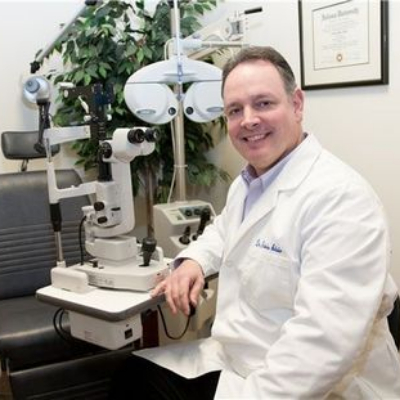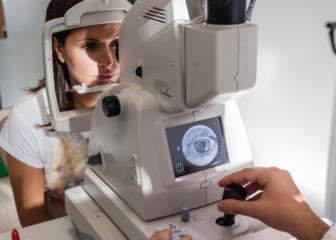Exploring the most recent Technological Advancements in Optometry and What They Mean for Optometrists
From the accuracy of Optical Comprehensibility Tomography to the nuanced insights provided by AI-driven diagnostic devices, these innovations are setting new requirements in person assessment and treatment. As these innovations permeate the method, eye doctors are encountered with the challenge of embracing these tools to improve patient results.
Technologies in Diagnostic Equipment
Advancing the area of optometry, innovations in diagnostic devices have reinvented the way eye treatment experts examine and detect aesthetic impairments and ocular conditions. The past decade has experienced substantial technical developments, making it possible for more accurate and comprehensive analyses. Optical Comprehensibility Tomography (OCT), as an example, gives high-resolution cross-sectional pictures of the retina, enabling the very early discovery of conditions such as glaucoma and age-related macular degeneration. This non-invasive imaging method has become important in contemporary optometric practice.
An additional key technology is the introduction of innovative corneal topography systems, which map the surface curvature of the cornea with accuracy. These devices are particularly valuable for suitable call lenses and diagnosing corneal conditions. Furthermore, digital retinal imaging has actually transformed conventional ophthalmoscopy, supplying comprehensive, scenic sights of the retina that facilitate comprehensive visual assessments.
The growth of wavefront aberrometry has actually also been essential, allowing the evaluation of refractive mistakes with unparalleled accuracy (Eye Doctor). This innovation helps in tailoring rehabilitative lenses and improving medical end results for refractive surgeries. Collectively, these analysis advancements empower optometrists to deliver exceptional patient care, guaranteeing very early intervention and tailored treatment techniques, eventually enhancing visual health outcomes
AI in Patient Management
Structure on the structure of sophisticated analysis tools, the incorporation of expert system (AI) in patient monitoring stands for a transformative leap for optometry. AI systems are progressively employed to boost effectiveness, accuracy, and personalization in person treatment. By evaluating vast quantities of information, AI can identify patterns and forecast possible ocular problems, making it possible for optometrists to tailor treatments better. This capability is crucial in taking care of persistent eye diseases such as glaucoma and diabetic person retinopathy, where early discovery and constant monitoring are crucial.
In addition, AI-driven platforms promote streamlined individual interactions and management procedures. Automated scheduling, digital assessments, and individualized follow-up plans not just improve client complete satisfaction yet also enhance time monitoring for practitioners. These systems can triage clients based on the seriousness of their problems, guaranteeing that those in essential need get punctual focus.
Furthermore, AI improves decision-making by supplying eye doctors with evidence-based suggestions and treatment paths. By incorporating data from digital health and wellness records, AI devices supply understandings that educate medical choices, decreasing the threat of mistakes and improving individual results. As AI proceeds to develop, its function in person administration will likely increase, improving the landscape of optometric treatment.
Developments in Retinal Imaging
In the world of optometry, retinal imaging has actually seen remarkable technological innovations that are boosting diagnostic capacities and client treatment. Advancements such as Optical Comprehensibility Tomography (OCT) and fundus photography have reinvented how eye doctors examine the retina and imagine.
Enhanced imaging modalities like OCT angiography are further refining analysis precision. Eye Doctor. Such advancements assist in the identification of minute retinal modifications that might signify disease development.
Additionally, developments in synthetic knowledge are augmenting retinal imaging by making it possible for automatic analysis of big datasets. These systems assist eye doctors in identifying patterns a sign of pathology, thereby enhancing analysis accuracy and performance. Collectively, these developments are transforming retinal imaging right into a keystone of modern eye treatment, improving results and increasing restorative possibilities.
Teleoptometry's Expanding Duty
Teleoptometry is increasingly ending up being a crucial part of eye care, driven by advancements in electronic communication and analysis devices. As optometry accepts electronic improvement, teleoptometry promotes remote assessments, allowing optometrists to prolong their solutions beyond typical boundaries. This is specifically valuable in underserved and country locations where accessibility to specialized eye treatment is commonly restricted. By leveraging high-resolution video clip conferencing and progressed retinal imaging, eye doctors can conduct thorough eye examinations from afar, making sure prompt diagnosis and therapy.
The combination of expert system (AI) further enhances teleoptometry, enabling the evaluation of visual information and assisting in the discovery of eye conditions such as glaucoma and diabetic retinopathy. AI-powered formulas can quickly analyze complicated imaging data, supplying eye doctors with useful insights that reinforce scientific decision-making.
In addition, teleoptometry sustains continuity of care through seamless assimilation with electronic health records (EHRs), enabling eye doctors to maintain thorough patient histories. This ensures that individuals receive constant and tailored treatment also when speaking with different experts.
Regardless of these more info here advantages, challenges remain, including making certain information safety and handling person assumptions. Nonetheless, teleoptometry represents a substantial stride in the direction of even more accessible, effective, and patient-centered eye care. As modern technology progresses, its duty is check my reference poised to increase additionally.

Future Patterns in Eye Care
A myriad of innovative trends is readied to reshape the future of eye treatment, driven by technical advancements and the progressing needs of patients. One considerable trend is the combination of fabricated intelligence (AI) in diagnostics, which assures to boost the precision and efficiency of eye assessments. AI algorithms can analyze vast amounts of data from retinal pictures, potentially spotting problems like diabetic retinopathy and glaucoma earlier than conventional approaches.
Additionally, personalized medicine is obtaining traction in optometry, with hereditary testing educating customized treatment plans. This strategy aims to enhance individual results by tailoring treatments to private hereditary accounts. Wearable innovation, such as clever call lenses, is also imminent, using real-time tracking of intraocular pressure or sugar degrees, therefore offering continuous understandings right into systemic and eye wellness.
The adoption of enhanced truth my sources (AR) and virtual reality (VR) in training and person education and learning is an additional arising trend. These innovations supply immersive experiences that can improve understanding and abilities both for people and optometrists. As these fads advance, optometrists need to remain abreast of technical innovations to supply advanced treatment, making certain enhanced individual end results and contentment in the dynamic landscape of eye care.
Conclusion

Collectively, these analysis improvements encourage optometrists to provide exceptional individual care, ensuring very early treatment and tailored treatment techniques, inevitably boosting visual health outcomes.

As these innovations continue to develop, eye doctors have to adapt and incorporate them right into method, inevitably enhancing operations effectiveness and boosting the requirement of eye care delivered to individuals.